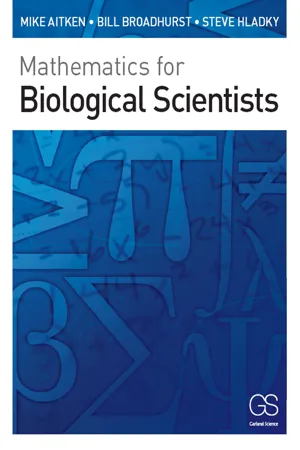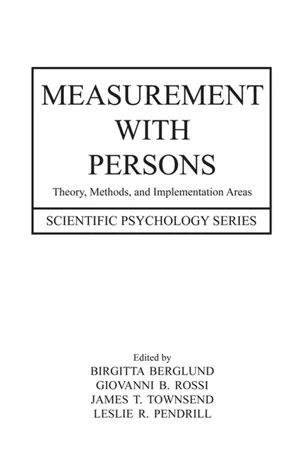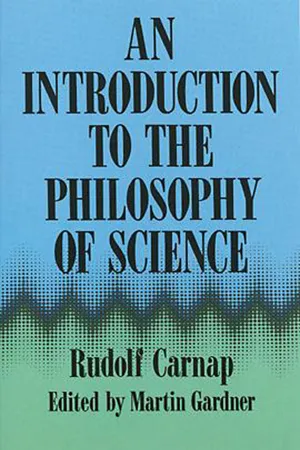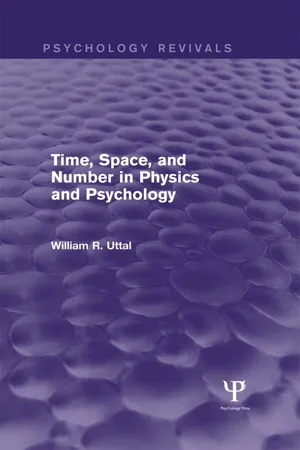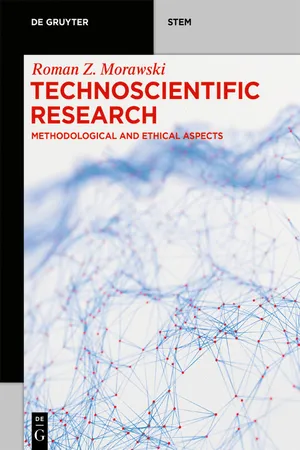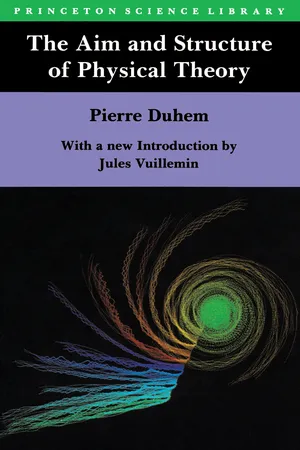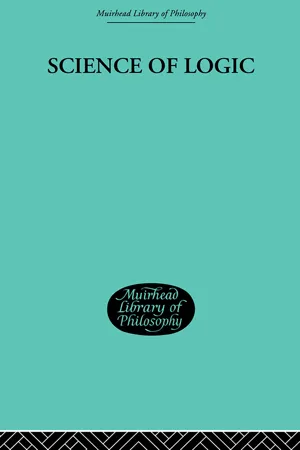Physics
Physical Quantities
Physical quantities are measurable properties of physical systems, such as length, mass, time, and temperature. They are characterized by a numerical value and a unit of measurement. In physics, these quantities are essential for describing and understanding the behavior of natural phenomena and are often used in mathematical equations to represent physical laws and relationships.
Written by Perlego with AI-assistance
Related key terms
7 Key excerpts on "Physical Quantities"
- eBook - ePub
- Mike Aitken, Bill Broadhurst, Stephen Hladky(Authors)
- 2009(Publication Date)
- Garland Science(Publisher)
CHAPTER 1 Quantities and UnitsFigure 1.1The authors, Mike, Steve, and Bill, holding a protein sample destined for the 500 MHz NMR spectrometer in the background. Image courtesy of Mike Aitken, Bill Broadhurst, and Steve Hladky.As scientists, we need to make quantitative statements about the Physical Quantities measured in our experiments. Algebra provides the language and grammar to make these statements. In this language the sentences are equations or inequalities whereas the words are symbols. A symbol may stand for a physical quantity or a number; for an operation such as addition or multiplication; or for a relationship such as ‘is equal to’ or ‘is greater than’. Often we use letters such as x, t, m, or A to stand for Physical Quantities such as distance, time, mass, or area. Symbols can also be special characters such as + for addition, or a combination of letters such as ‘sin’ for the sine function introduced in Chapter 4 .A physical quantity is a combination of a numerical value and a unit, for example a length of 1 m, a time of 2 s, or a mass of 70 kg, where the ‘m’ stands for meter, ‘s’ for second, and ‘kg’ for kilogram. Both are needed; if we change the unit the number changes accordingly. Many of the laws of science are expressed as simple equations relating Physical Quantities. A familiar example is F = ma where F, m, and a stand for force, mass, and acceleration. There are various systems for choosing units and conventions for how Physical Quantities are to be described. In this book we use the Système Internationale (SI) system of units, which has become standard for scientists and engineers throughout the world.1.1 Symbols, operations, relations, and the basic language of mathematicsIn the language of mathematics, the words are symbols like x, t, m, +, ×, ÷, =, >. Symbols can stand for numbers or for Physical Quantities; they can indicate operations or they can state relationships like ‘is equal to’ or ‘is greater than’. You first started using many of these symbols back in primary school where you learned what + and = mean. Even then you also used symbols to stand for unknown numbers in exercises like that shown in Figure 1.2 - eBook - ePub
Measurement With Persons
Theory, Methods, and Implementation Areas
- Birgitta Berglund, Giovanni B. Rossi, James T. Townsend, Leslie R. Pendrill(Authors)
- 2013(Publication Date)
- Psychology Press(Publisher)
measurement is equivalent to the counting of such units. From this analogy it is possible to derive the conditions that must be met in order for measurement to make sense, that is, the conditions for measurability. Counting is possible thanks to the properties of natural numbers, which undergo an order, based on the relation “greater than or equal to,” and may be added to each other. Similarly, measurement is possible and well founded whenever it is possible to identify the empirical counterparts of the order relation and of the addition operation for the objects carrying the characteristic of interest. For example, in the case of mass measurement, order may be established by comparing objects by an equal-arms balance and addition of two objects consists in putting them on the same pan of the balance. Thanks to these properties it is possible to construct a measurement scale, which supports the practice of measurement, as we soon show. An important question is now whether it is possible to establish the above properties for all kinds of measurement. Helmholtz admits it is not and mentions an indirect approach as an approach. This idea was developed afterwards by Campbell, yielding the distinction between fundamental and derived quantities.1.2.2 Campbell: The foundation of physical measurementThe first organic presentation of a theory for physical measurement was by Campbell, in the second part of his book, Physics—The Elements, published in 1920 (Campbell, 1957). Like Helmholtz, he considers the problem of… why can and do we measure some properties of bodies while we do not measure others?… I have before my table [he writes] a tray containing several similar crystals. These crystals possess many properties among which may be included the following: Number, weight, density, hardness, colour, beauty. The first three of these qualities are undoubtedly capable of measurement—unless it be judged the number is to be excluded as being more fundamental than any measurement; concerning hardness it is difficult to say whether or not it can be measured, for though various systems of measuring hardness are in common use, it is generally felt that none of them are wholly satisfactory. Colour cannot be measured as the others can, that is to say it is impossible to denote the colour of an object by a single number which can be determined with the same freedom from arbitrariness which characterises the assigning of a number to represent weight or density. The last property, beauty, can certainly not be measured, unless we accept the view which is so widely current that beauty is determined by the market value. What is the difference between the properties which determine the possibility or impossibility of measuring them? - eBook - ePub
- Rudolf Carnap(Author)
- 2012(Publication Date)
- Dover Publications(Publisher)
My view on this question is as follows. I think it is best to regard the concepts of physics as theoretical concepts in the process of being specified in stronger and stronger ways, not as concepts completely defined by operational rules. In everyday life, we make various observations of nature. We describe those observations in qualitative terms, such as “long”, “short”, “hot”, “cold”, and in comparative terms, such as “longer”, “shorter”, “hotter”, “colder”. This observation language is connected with the theoretical language of physics by certain operational rules. In the theoretical language, we introduce quantitative concepts such as length and mass, but we must not think of such concepts as explicitly defined. Rather, the operational rules, together with all the postulates of theoretical physics, serve to give partial definitions, or rather, partial interpretations of the quantitative concepts.We know that these partial interpretations are not final, complete definitions, because physics is constantly strengthening them by new laws and new operational rules. No end to this process is in sight—physics is far from having developed a complete set of procedures—so we must admit that we have only partial, incomplete interpretations of all the theoretical terms. Many physicists include such terms as “length” in the observation vocabulary because they can be measured by simple, direct procedures. I prefer not to classify them this way. It is true that, in everyday language, when we say, “The length of this edge of the table is thirty inches”, we are using “length” in a sense that can be completely defined by the simple measuring-rod procedure. But that is only a small part of the total meaning of the concept of length. It is a meaning that applies only to a certain intermediate range of values to which the measuring-rod technique can be applied. It cannot be applied to the distance between two galaxies or between two molecules. Yet clearly, in these three cases, we have in mind the same concept. Instead of saying that we have many concepts of length, each defined by a different operational procedure, I prefer to say that we have one concept of length, partially defined by the entire system of physics, including the rules for all the operational procedures used for the measurement of length.The same is true for the concept of mass. If we restrict its meaning to a definition referring to a balance scale, we can apply the term to only a small intermediate range of values. We cannot speak of the mass of the moon or of a molecule or even the mass of a mountain or of a house. We should have to distinguish between a number of different magnitudes, each with its own operational definition. In cases in which two different methods for measuring mass could be applied to the same object, we would have to say that, in those cases, the two magnitudes happened to have the same value. All this would lead, in my opinion, to an unduly complicated way of speaking. It seems best to adopt the language form used by most physicists and regard length, mass, and so on as theoretical concepts rather than observational concepts explicitly defined by certain procedures of measurement. - William R. Uttal(Author)
- 2014(Publication Date)
- Psychology Press(Publisher)
As we saw in earlier sections of this chapter, all of physical science depends on certain properties of the quantifiability of time, space, and numerousness to provide the coherence and regularity necessary for the application of not only mathematics, but also any systematic method of study (e.g., taxonomic classification) to a domain of knowledge. The dimensions of time and space must be measurable in units that are dependable and stable from situation to situation, and that follow the laws of arithmetic manipulation. Unless the dimensions and units of psychological mechanisms and processes are also dependable, then formal models of an axiomatic-deductive nature would be impossible. If 1 + 1 does not always equal 2, trouble is ahead for any putative science. Clyde Coombs (1950), the eminent University of Michigan mathematical psychologist and a highly respected friend and colleague from my Michigan days, put it in the following words: The concept of measurement has generally meant the assignment of numbers to objects with the condition that these numbers must obey the rules of arithmetic. This concept of measurement requires a ratio scale—one with a non-arbitrary origin of zero and a constant unit of measurement, (p. 145) 24 It is important to appreciate that the requirement for a non-arbitrary zero also implies that the metric being used is non-arbitrary. (A metric in a formal sense is a “geometric function that describes the distances between pairs of points in a space.”) For physics, we have a very clear idea of what the metrics are. However, for most cognitive, mental, or psychological spaces, the metric is often arbitrary and inadequately anchored to any physical dimension, if not just downright mysterious. In many cases, zero points are arbitrary. Measurement in psychology is hampered by this arbitrariness- No longer available |Learn more
Technoscientific Research
Methodological and Ethical Aspects
- Roman Z. Morawski(Author)
- 2019(Publication Date)
- De Gruyter(Publisher)
6 MeasurementIn technoscience, measurement is usually understood as a process of acquiring quantitative data by empirical means. It should be noted that in some domains of technoscience, e.g. , in control theory, as well as in some areas of philosophy of science, this concept is used interchangeably with the concept of observation. In this book, however, the latter is understood exclusively as a process of acquiring qualitative data by means of both sensorial apparatus and its technical extensions such as microscopes or telescopes.6.1 Basic concepts of measurement science
According to the everyday understanding, a measurement is an act of assigning a number to a selected property of an object, of a phenomenon or of an event. This number must be, however, associated with a unit being specific for that property; so, 1 kg is a valid result of measurement of the mass of sugar, and 37.6 °C – of the temperature of a human body. A brief synopsis of the historical development of the concept of measurement may be found in the 2004 article of the Australian philosopher of engineering Timothy L. J. Ferris, where the following eclectic definition of measurement is proposed: “Measurement is an empirical process, using an instrument, effecting a rigorous and objective mapping of an observable into a category in a model of the observable that meaningfully distinguishes the manifestation from other possible and distinguishable manifestations”140 .According to the internationally agreed normative document entitled International Vocabulary of Metrology – Basic and General Concepts and Associated Terms (called VIM hereinafter), measurement is a “process of experimentally obtaining one or more quantity values that can reasonably be attributed to a quantity”141 , where quantity is a “property of a phenomenon, body, or substance, where the property has a magnitude that can be expressed as a number and a reference”142 . A measurement unit is defined there as a “real scalar quantity, defined and adopted by convention, with which any other quantity of the same kind can be compared to express the ratio of the two quantities as a number”143 . From the today’s science point of view, such understanding of measurement is not general enough to meet the needs of contemporary scientific research. Seeing measurement as a special case of the parametric identification of a mathematical model seems to be the outcome of the development of measurement theory during the last 150 years. Although the history of measurements and measures may be traced back to the ancient Egypt and Mesopotamia, the first mature attempts of theoretical approach to measurement appeared only in the second half of the nineteenth century. In 1887, the German physician and physicist Hermann L. F. von Helmholtz published a small treaty “Zählen und Messen erkenntnisstheoretisch betrachet”144 which initiated a stream of works aimed at the development of an axiomatic theory of measurement. Those works reached maturity in the period of 20 years separating the publication of a seminal article “A Set of Independent Axioms for Extensive Quantities”145 (1951) – authored by the American philosopher Patrick C. Suppes (1922–2014) – and the appearance of the first volume of a fundamental handbook Foundations of Measurement 146 (1971). The latter initiated a large-scale synthesis of the so-called representational theory of measurement , the synthesis completed only in 1989–1990 when two consecutive volumes of that handbook appeared147 , 148 - eBook - ePub
- Pierre Maurice Marie Duhem, Philip P. Wiener, Philip P. Wiener(Authors)
- 2021(Publication Date)
- Princeton University Press(Publisher)
One of the claims to fame of the geniuses who made the sixteenth and seventeenth centuries distinguished was the recognition of the truth that physics would not become a clear and precise science, exempt from the perpetual, sterile disputes characterizing its history till then, and would not be capable of demanding universal assent for its doctrines so long as it would not speak the language of geometers. They created a true theoretical physics by their understanding that it had to be mathematical physics.Created in the sixteenth century, mathematical physics proved it was the sound method of physics by the wonderful, steady progress it made in the study of nature. Today it would be impossible, without shocking the plainest good sense, to deny that physical theories should be expressed in mathematical language.In order for a physical theory to be able to present itself in the form of a chain of algebraic calculations, all the ideas employed in the theory must be capable of being represented by numbers. This leads us to ask ourselves the following question: Under what conditions may a physical attribute be signified by a numerical symbol?2. Quantity and Measurement
The first answer to this question appears at once to the mind to be as follows: In order that an attribute found in a body may be expressed by a numerical symbol, it is necessary and sufficient that this attribute belong, in Aristotle’s language, to the category of quantity and not to the category of quality. In the more readily accepted language of modern geometry, it is necessary and sufficient that this attribute be a magnitude. - eBook - ePub
- G W F Hegel(Author)
- 2014(Publication Date)
- Routledge(Publisher)
If it is desired to make a proposition out of the determination in question, it can be expressed thus: all that exists has a measure. Everything that exists has a magnitude and this magnitude belongs to the nature of the something itself; it constitutes its specific nature and its being-within-self. Something is not indifferent to this magnitude, so that if this were altered it would continue to be what it is; on the contrary, an alteration of the magnitude would alter the quality of the something. Quantum, as measure, has ceased to be a limit which is no limit; it is now the determination of the thing, which is destroyed if it is increased or diminished beyond this quantum.A measure taken as a standard in the usual meaning of the word is a quantum which is arbitrarily assumed as the intrinsically determinate unit relatively to an external amount. Such a unit can, it is true, also be in fact an intrinsically determinate unit, like a foot and suchlike original measures; but in so far as it is also used as a standard for other things it is in regard to them only an external measure, not their original measure. Thus the diameter of the earth or the length of a pendulum may be taken, each on its own account, as a specific quantum; but the selection of a particular fraction of the earth’s diameter or of the length of the pendulum, as well as the degree of latitude under which the latter is to be taken for use as a standard, is a matter of choice. But for other things such a standard is still more something external. These have further specified the general specific quantum in a particular way and have thereby become particular things. It is therefore foolish to speak of a natural standard of things. Moreover, a universal standard ought only to serve for external comparison; in this most superficial sense in which it is taken as a universal measure it is a matter of complete indifference what is used for this purpose. It ought not to be a fundamental measure in the sense that it forms a scale on which the natural measures of particular things could be represented and from which, by means of a rule, they could be grasped as specifications of a universal measure, i.e. of the measure of their universal body. Without this meaning, however, an absolute measure is interesting and significant only as a common element
Index pages curate the most relevant extracts from our library of academic textbooks. They’ve been created using an in-house natural language model (NLM), each adding context and meaning to key research topics.
